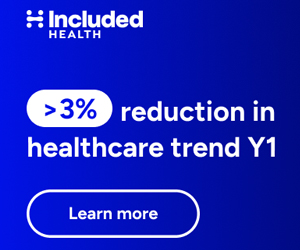By Dan Diamond
 “Why is Wal-Mart speaking at a health care summit?” the company’s vice president for health and wellness, Marcus Osborne, rhetorically offered up at a conference back in January.
“Why is Wal-Mart speaking at a health care summit?” the company’s vice president for health and wellness, Marcus Osborne, rhetorically offered up at a conference back in January.
“Wal-Mart’s in retail, we’re not in health care.”
But as analysts, researchers, and other experts who spoke with me. took care to point out, Wal-Mart is in health care, and getting further entrenched by the year. In the past six months alone, Wal-Mart launched a major contracting initiative with half-a-dozen major hospitals, and dropped hints — since retracted — that the company is exploring new services like a health insurance exchange.
Notably, Osborne teased a broader health care strategy for Wal-Mart that would include “full primary care services over the next five to seven years,” in a Q&A at that January conference captured by the Orlando Business Journal.
Wal-Mart has since denied Osborne’s comments — the second time in about 18 months that the company has had to walk back stories about its planned primary care services — and Osborne subsequently stopped talking to the press. (Wal-Mart declined to comment, and Osborne did not respond to an interview request for this story.)
But Osborne’s remarks from that January conference, and his other archived speeches, are still readily accessible. And they paint a vivid picture of a company that’s not just a potential market-mover and disruptive innovator, but an organization that could do a lot to positively reform health care.
Background: Wal-Mart’s Growing Role in U.S. Health Care System
In many ways, this isn’t a new story. Back in 2007, Princeton University’s Uwe Reinhardt suggested to NPR that Wal-Mart could be “taking aim at the entire health care system” by expanding its new discount drug program.
“I think it’s a really fascinating way to come out of the corner and really slug the system,” Reinhardt said at the time. “At the moment, the body blows don’t hurt. But they add up. I’m watching this with great fascination, and expect more from them.”
And in subsequent years, Wal-Mart did grow its health care footprint, from launching retail clinics based within its stores to advocating for national health reform. Considering its history — as recently as 2005, Wal-Mart had little involvement in the health care market and was being pilloried for skimping on its own employees’ benefits — it’s been a significant turnaround for the firm, and has positioned Wal-Mart as one of the leading disruptive innovators in health care.Continue reading…
 Robert Pear wrote in the Times that the refusal by “states to expand Medicaid will leave millions of poor people ineligible for government-subsidized health insurance…[1]” Indeed, the refusals will do that, as well as worsen what instead should be remedied. In the following I present a graph of two chronic diseases over the 50 states. Those states which have opted out of the Medicaid expansion are identified. Additionally each state’s poverty rate is indicated. The take-away is that populations in greater need are being further disadvantaged. A conjecture is presented as to why.
Robert Pear wrote in the Times that the refusal by “states to expand Medicaid will leave millions of poor people ineligible for government-subsidized health insurance…[1]” Indeed, the refusals will do that, as well as worsen what instead should be remedied. In the following I present a graph of two chronic diseases over the 50 states. Those states which have opted out of the Medicaid expansion are identified. Additionally each state’s poverty rate is indicated. The take-away is that populations in greater need are being further disadvantaged. A conjecture is presented as to why.


 “Why is Wal-Mart speaking at a health care summit?” the company’s vice president for health and wellness, Marcus Osborne, rhetorically offered up at a conference back in January.
“Why is Wal-Mart speaking at a health care summit?” the company’s vice president for health and wellness, Marcus Osborne, rhetorically offered up at a conference back in January.










